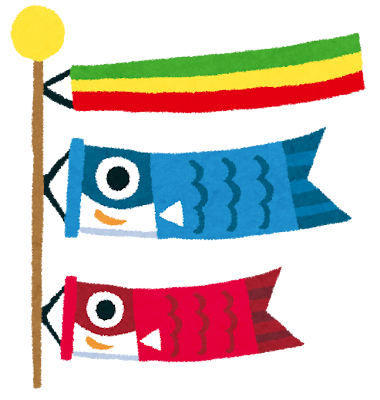Good to see you again! It is the blog How Unique Japan.
We always share Japanese uniqueness through this website!
This time, we want to write about a flag. It is like a fish, CARP.
Does it not make sense? See the picture below.
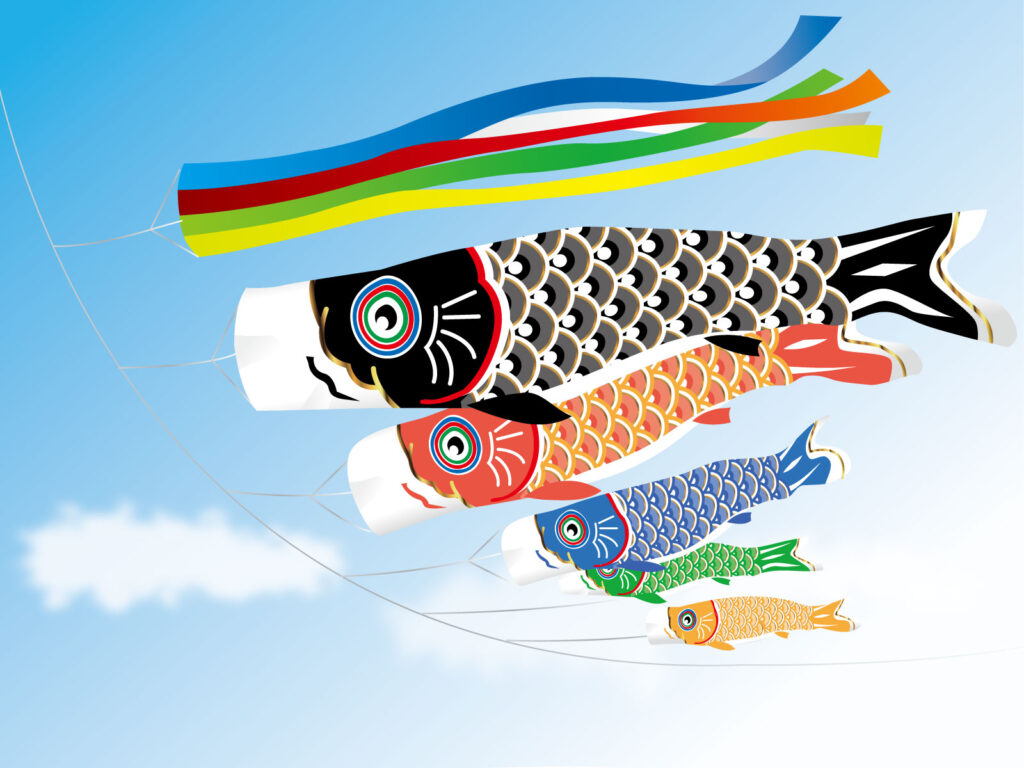
They are Koinobori (Carp streamers).
It is a famous flag to celebrate the holiday to pray for the healthy growth of children.
It is called Kids Day (Kodomo no Hi) on May 5th.
Surprisingly, the holiday has a long history, back to the Nara era (from 710 to 784 AD!).
The custom of raising the carp flag originated during the Edo period from 1603 to 1868.
Why the carp?
The meaning of carp streamers
The Kids’ Day and carp ideas are from China, although there is no connection between them.
Around May, China used to have a season to admire children’s growth because the warm/spring season makes some germs or bacteria active. They used to attack children who were not ready to protect themselves with their immune systems. That is why many adults prayed for their growth with no trouble.

On the other hand, there is still a famous legend. The title is Touryumon (a gate to be a rising dragon). The ancient Chinese believed that a carp trying to swim against the waterfall could be a dragon if it successfully got to the top of the stream.
Japanese in the old era loved the story and acknowledged the meaning as soft propaganda to raise children healthy and strong, because it sounds like Face your fate. Be better and take career advancement.
Thus, we Japanese have many symbols related to carp, such as Kamon (Japanese emblem) and traditional armor.
During the height of the Edo period, they combined and became a unique flag and holiday in Japan. It is the Koinobori (Carp streaming).
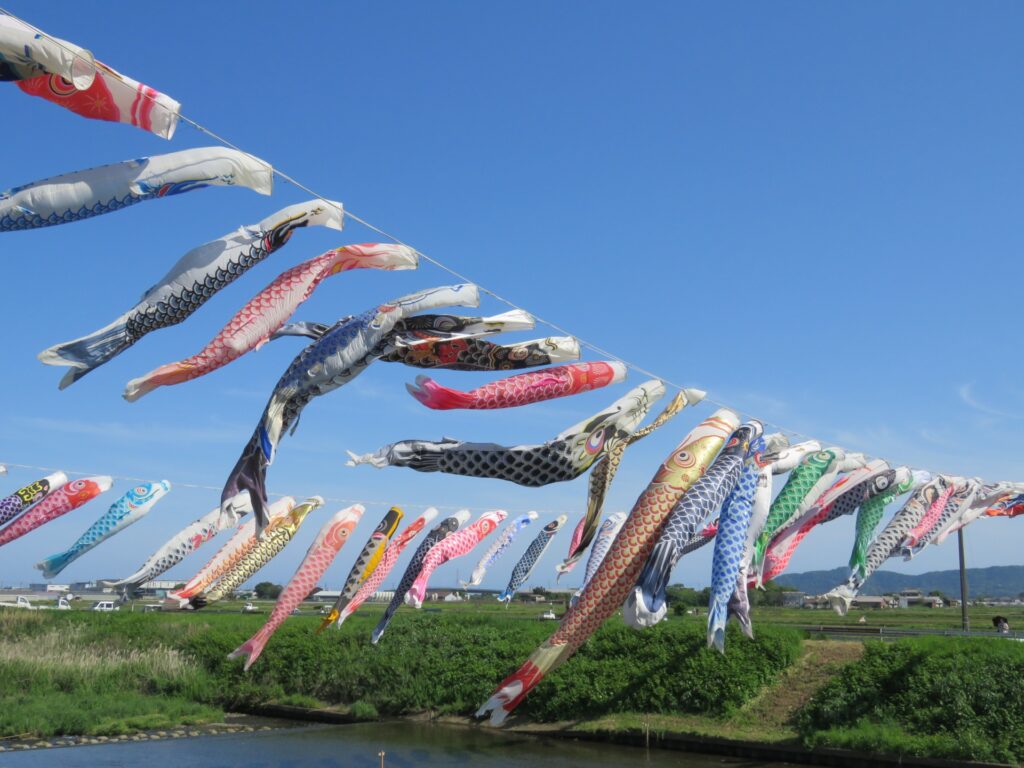
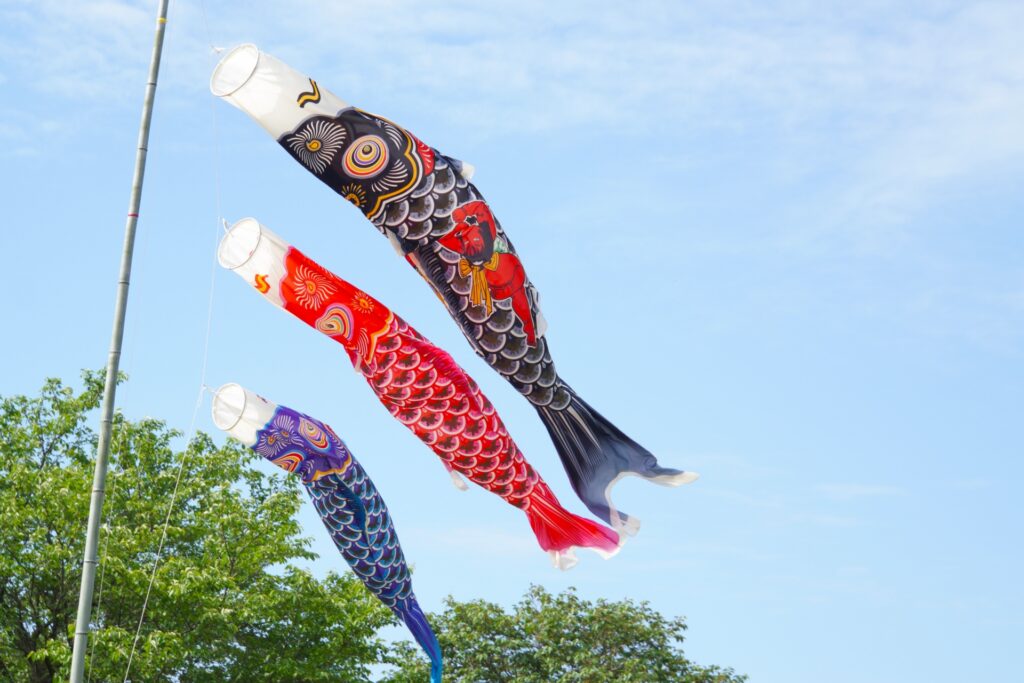
Fun fact
Do you play Pokémon? In the game, there is the most useless monster. It is Magicarp (Koiking in Japan) because it can not learn any attack, only Splash.
However, if you put a great effort into growing it, it transforms into a strong Pokémon.
Indeed. The monster is from the legend. A carp can be a dragon.
What else do we do for the holiday?
The flag and holiday have a deep meaning. But it is not yet. There are several ways to celebrate the holiday (Kids Day) in each prefecture of Japan.
We cannot write all the differences due to the complications. At least, the unique way to take a BATH is a common habit around.
On 5th May, some parents put Irises in the bath. It says Syoubu (iris) yu (hot bath). Why do they put the plants?
It is because the ancient Japanese believed that the iris had the power to purify any bad luck with its perfume. It is also traditional.
In historical theory, this habit emerged during the officially recognized Nara era (710-784 AD).
Additionally, the essential oil from perfume can have a positive effect. When we take the Syoubu-yu, we can obtain good blood circulation, moisturized skin, and a relaxing aroma.
It can help us recognize that traditional habits and ideas are sometimes valuable.
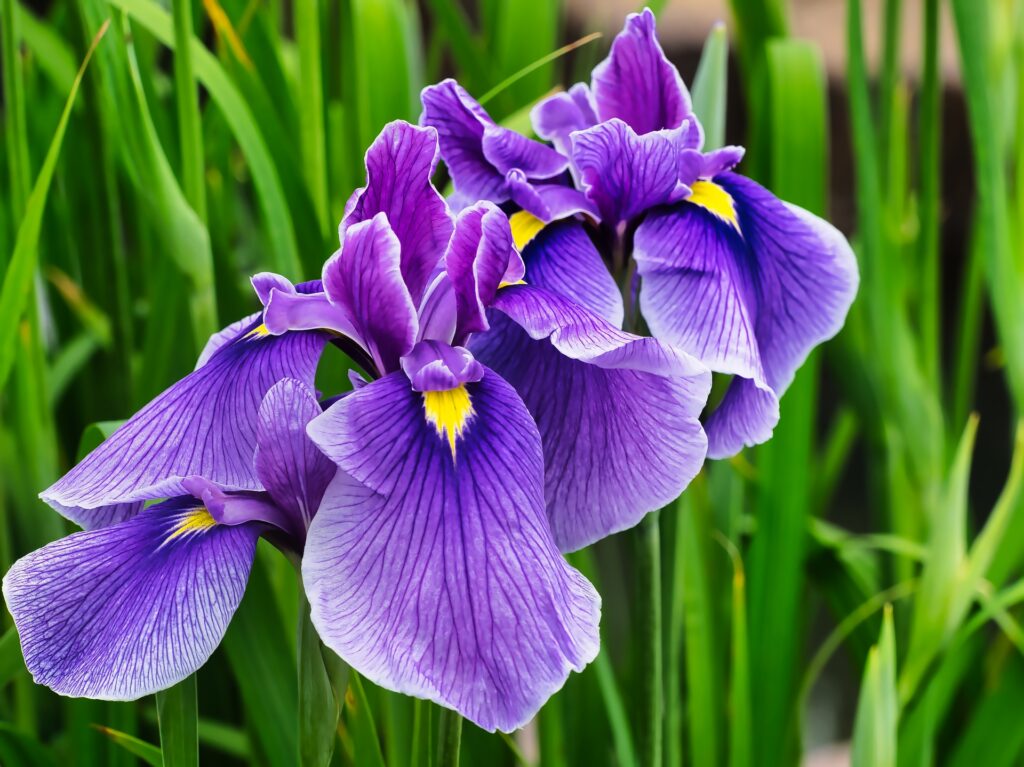
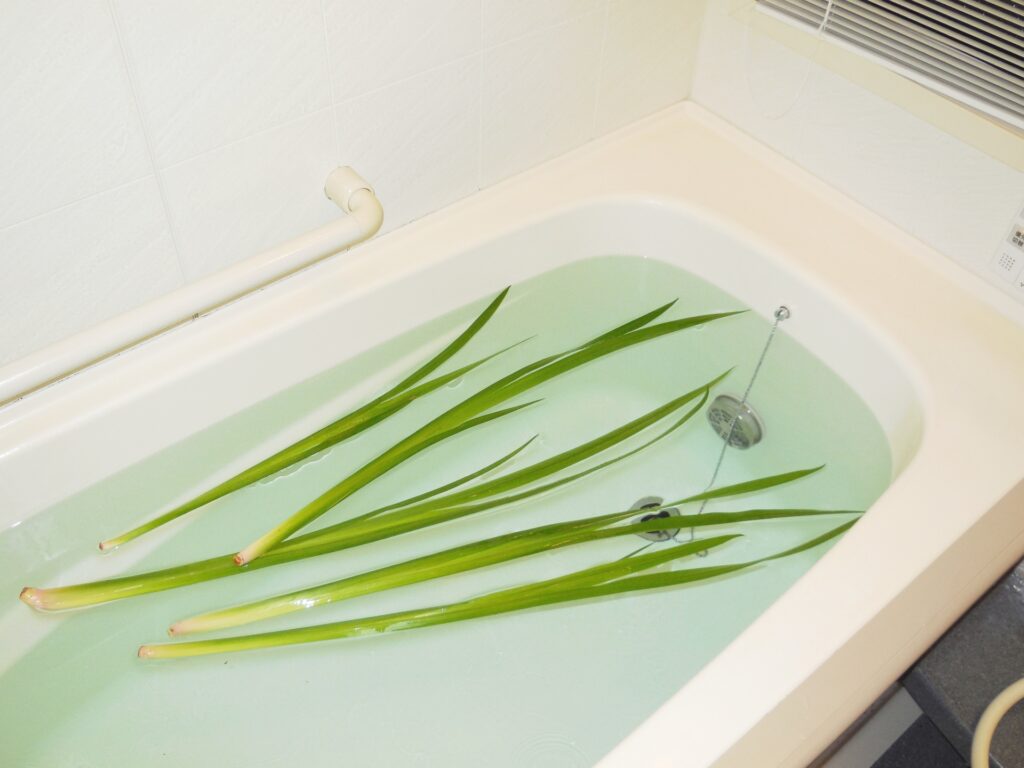
To close
It is all for this article. Thank you so much for reading! However, it is not yet. There are still many kinds of holidays and festivals in Japan.
Around the northern part, there is a Japanese demon (called ONI), hunting kids who have a bad attitude in the Winter season.
It is an official festival. The villagers wear costumes of the demon to threaten children. The festival is named NAMAHAGE.
Indeed. It is just one example of those. If you are interested in more Japanese uniqueness, click the front page and try to find your proper article! (If you cannot, I have to apologize. This blog is young!)
OK NOW! SEE YOU FOR THE NEXT ARTICLE!
